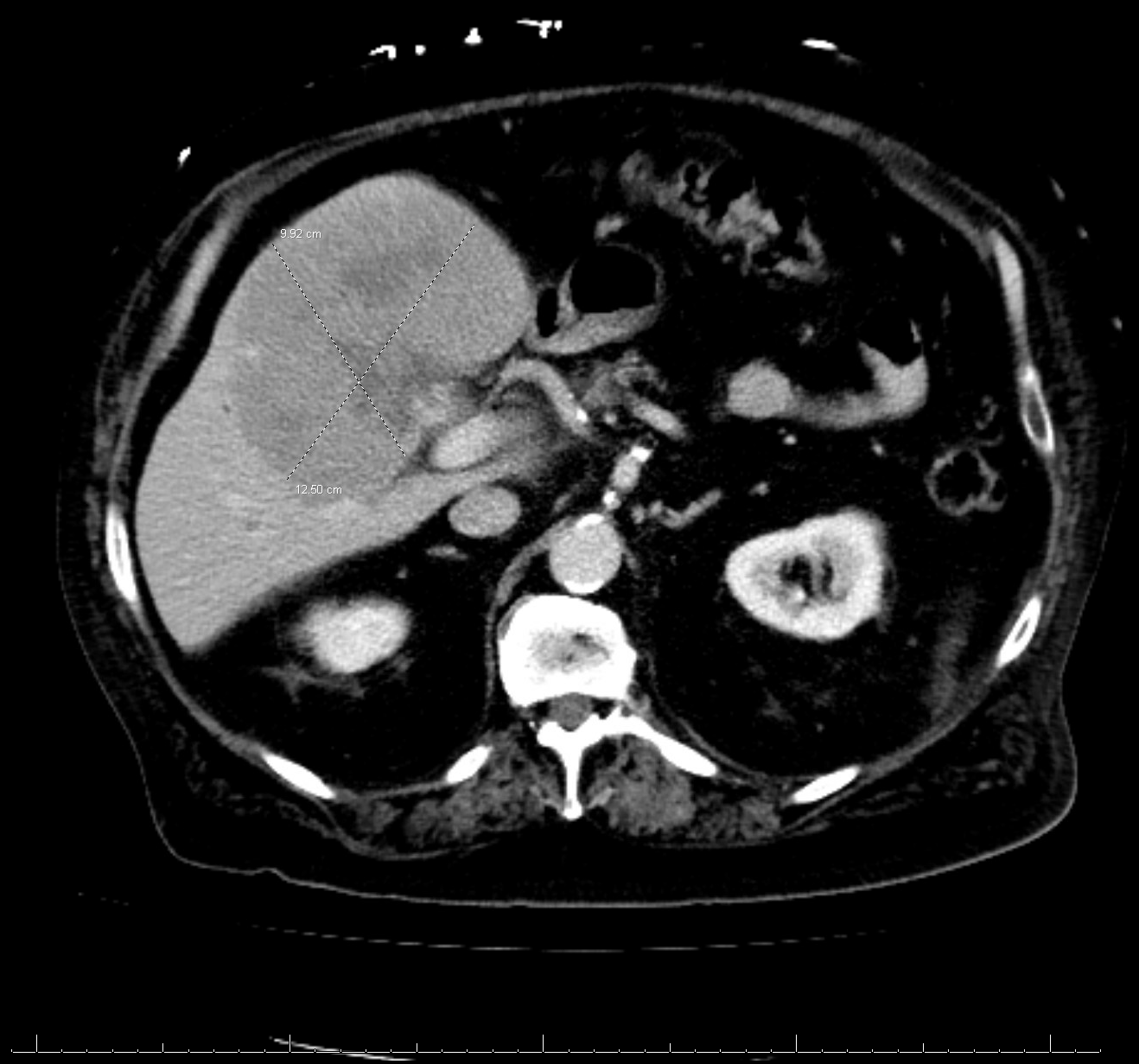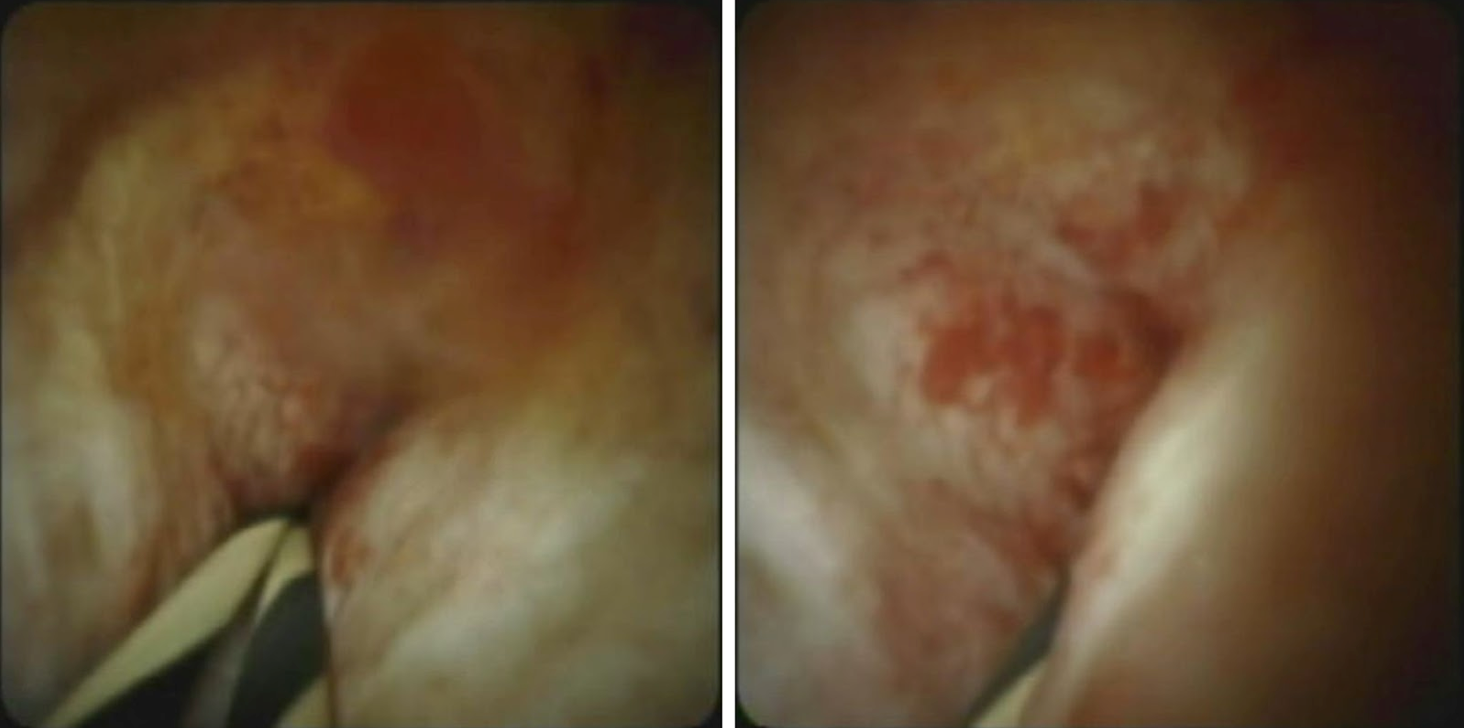Tuesday Poster Session
Category: Biliary/Pancreas
P4404 - An Unusual Presentation of Obstructive Jaundice Due to Primary Hepatic Lymphoma
Tuesday, October 28, 2025
10:30 AM - 4:00 PM PDT
Location: Exhibit Hall

Wilhelm Basegoda, MD (he/him/his)
University of South Alabama
Mobile, AL
Presenting Author(s)
Wilhelm Basegoda, MD1, Cesar Moreno, MD2, Mason Adams, MD3
1University of South Alabama, Mobile, AL; 2University of South Alabama Health Systems, Mobile, AL; 3USA Health, University of South Alabama, Mobile, AL
Introduction: Primary hepatic lymphoma (PHL) is exceedingly rare. Obstructive jaundice is an unusual presentation of PHL and raises suspicion for cholangiocarcinoma. We present the case of a 78-year-old male with painless jaundice and initial concern for cholangiocarcinoma who was found to have PHL.
Case Description/
Methods: A 78-year-old male with atrial fibrillation and peripheral arterial disease presented to the emergency department with painless jaundice. He denied abdominal pain, fevers, night sweats, and weight loss. The physical exam revealed generalized jaundice and no abdominal tenderness. Initial laboratory evaluation showed marked hyperbilirubinemia (15 mg/dL, predominantly conjugated), moderate elevation in liver associated enzymes with mixed pattern. Tumor marker evaluation showed a significantly elevated cancer antigen 19-9 of 611 U/mL, mild carcinoembryonic antigen elevation of 5.5 ng/mL and normal alpha-fetoprotein. Abdominal imaging (figure 1) showed a large hepatic heterogenous hypodense lesion measuring 12.5 x 9.9 x 4.4 cm, with internal cystic changes and necrosis, intrahepatic biliary ductal dilatation and prominent periaortic and mediastinal lymphadenopathy. Additional imaging was negative for systemic disease. There was initial concern for cholangiocarcinoma due to obstructive jaundice and elevated tumor marker. The patient had esophagogastroduodenoscopy and endoscopic ultrasound with biopsy of the hepatic mass. Endoscopic retrograde cholangiopancreatography showed a stricture in the common hepatic duct (CHD). SpyGlass cholangioscopy showed an intraluminal mass (figure 2) at the level of the CHD which was biopsied. Dilation of the hepatic ducts was performed and a right hepatic duct stent was deployed. The biopsy of the liver mass revealed diffuse large B-cell lymphoma and the biopsy of the biliary mass showed crushed lymphoma tissue. The patient was discharged with close hematology-oncology follow up.
Discussion: Primary hepatic lymphoma is a rare manifestation of non-Hodkin’s lymphoma (NHL) that consists of 0.1% of all hepatic malignancies and 0.4% of extranodal NHL. The clinical presentation is nonspecific. Our patient had obstructive jaundice, a CHD stricture and a CHD mass which raised concern for cholangiocarcinoma. The definitive diagnosis of PHL requires liver mass biopsy and exclusion of systemic disease. This case highlights the importance of maintaining a broad differential in evaluating hepatic lesions to include lymphoproliferative malignancies such as PHL.

Figure: Figure 1. Computed tomography scan showing large hepatic lesion

Figure: Figure 2. CHD stricture and intraductal mass on SpyGlass cholangioscopy
Disclosures:
Wilhelm Basegoda indicated no relevant financial relationships.
Cesar Moreno indicated no relevant financial relationships.
Mason Adams indicated no relevant financial relationships.
Wilhelm Basegoda, MD1, Cesar Moreno, MD2, Mason Adams, MD3. P4404 - An Unusual Presentation of Obstructive Jaundice Due to Primary Hepatic Lymphoma, ACG 2025 Annual Scientific Meeting Abstracts. Phoenix, AZ: American College of Gastroenterology.
1University of South Alabama, Mobile, AL; 2University of South Alabama Health Systems, Mobile, AL; 3USA Health, University of South Alabama, Mobile, AL
Introduction: Primary hepatic lymphoma (PHL) is exceedingly rare. Obstructive jaundice is an unusual presentation of PHL and raises suspicion for cholangiocarcinoma. We present the case of a 78-year-old male with painless jaundice and initial concern for cholangiocarcinoma who was found to have PHL.
Case Description/
Methods: A 78-year-old male with atrial fibrillation and peripheral arterial disease presented to the emergency department with painless jaundice. He denied abdominal pain, fevers, night sweats, and weight loss. The physical exam revealed generalized jaundice and no abdominal tenderness. Initial laboratory evaluation showed marked hyperbilirubinemia (15 mg/dL, predominantly conjugated), moderate elevation in liver associated enzymes with mixed pattern. Tumor marker evaluation showed a significantly elevated cancer antigen 19-9 of 611 U/mL, mild carcinoembryonic antigen elevation of 5.5 ng/mL and normal alpha-fetoprotein. Abdominal imaging (figure 1) showed a large hepatic heterogenous hypodense lesion measuring 12.5 x 9.9 x 4.4 cm, with internal cystic changes and necrosis, intrahepatic biliary ductal dilatation and prominent periaortic and mediastinal lymphadenopathy. Additional imaging was negative for systemic disease. There was initial concern for cholangiocarcinoma due to obstructive jaundice and elevated tumor marker. The patient had esophagogastroduodenoscopy and endoscopic ultrasound with biopsy of the hepatic mass. Endoscopic retrograde cholangiopancreatography showed a stricture in the common hepatic duct (CHD). SpyGlass cholangioscopy showed an intraluminal mass (figure 2) at the level of the CHD which was biopsied. Dilation of the hepatic ducts was performed and a right hepatic duct stent was deployed. The biopsy of the liver mass revealed diffuse large B-cell lymphoma and the biopsy of the biliary mass showed crushed lymphoma tissue. The patient was discharged with close hematology-oncology follow up.
Discussion: Primary hepatic lymphoma is a rare manifestation of non-Hodkin’s lymphoma (NHL) that consists of 0.1% of all hepatic malignancies and 0.4% of extranodal NHL. The clinical presentation is nonspecific. Our patient had obstructive jaundice, a CHD stricture and a CHD mass which raised concern for cholangiocarcinoma. The definitive diagnosis of PHL requires liver mass biopsy and exclusion of systemic disease. This case highlights the importance of maintaining a broad differential in evaluating hepatic lesions to include lymphoproliferative malignancies such as PHL.

Figure: Figure 1. Computed tomography scan showing large hepatic lesion

Figure: Figure 2. CHD stricture and intraductal mass on SpyGlass cholangioscopy
Disclosures:
Wilhelm Basegoda indicated no relevant financial relationships.
Cesar Moreno indicated no relevant financial relationships.
Mason Adams indicated no relevant financial relationships.
Wilhelm Basegoda, MD1, Cesar Moreno, MD2, Mason Adams, MD3. P4404 - An Unusual Presentation of Obstructive Jaundice Due to Primary Hepatic Lymphoma, ACG 2025 Annual Scientific Meeting Abstracts. Phoenix, AZ: American College of Gastroenterology.
